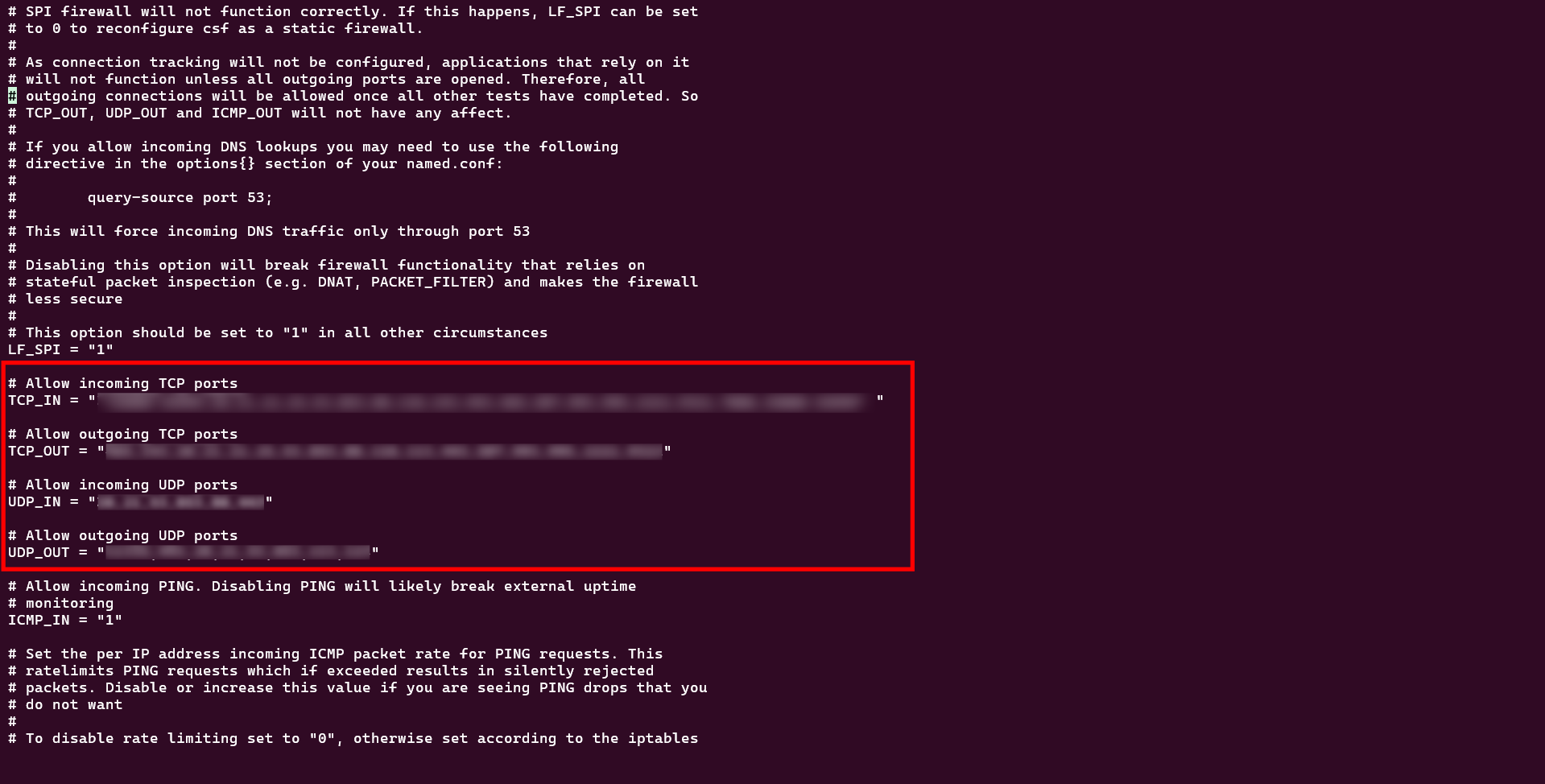Search Our Database
How to check open port via SSH
Introduction
To check the firewall status and determine which ports are open or blocked on a Linux system, there are several tools and commands available. The specific method depends on the type of firewall installed and in use on your system. Knowing how to check the firewall status and port accessibility is crucial for managing system security, troubleshooting connectivity issues, and ensuring that only the necessary services are exposed to the network.
Prerequisites
- SSH access to the server with root privilege. If you SSH the server as a non-root user, switch to root with sudo su
Step 1: Check on netstat/ss
- You may use netstat or ss to view the running ports on your server
telnet -tulnp
ss -tulnp
- You can grep a specific port for a deeper look
telnet -tulnp | grep :80
ss -tulnp :80
Step 2: Check on firewall
Next, you may check if the port is allowed in your firewall configurations
csf
- Open /etc/csf/csf.conf with your desired text editor. For this example, we may use vi /etc/csf/csf/conf.
- Once inside the file, look for TCP_IN, TCP_OUT, UDP_IN and UDP_OUT to inspect allowed inbound and outbound ports for both TCP and UDP
iptables
- You can check allowed ports in iptables by viewing existing rules with :
iptables -L -n
Step 3: Test with telnet
- From your local machine, you can try to test the port connectivity with telnet
telnet [IP ADDRESS] [PORT]
- If the port is accessible, it will show output such as :
# telnet 216.58.199.238 80 Trying 216.58.199.238... Connected to 216.58.199.238. Escape character is '^]'.
Conclusion
By using tools like , you can effectively inspect firewall rules and identify which ports are open or blocked on your Linux system—even over an SSH session. Understanding and regularly auditing open ports is essential for maintaining a secure server environment.
If you have any technical inquiries, feel free to contact us at support@ipservervone.com

